
Donate to Innerviews
Since 1994, Innerviews has provided uncompromising, in-depth interviews with musicians across every genre imaginable. And it does that with no trackers, cookies, clickbait, or advertising.
Your donations are welcome to help continue its mission of highlighting incredible music and artists, without any commercial considerations.
Your contributions will be instantly transformed into stories and videos, and cover hosting and web management costs. Importantly, your dollars will help ensure Innerviews remains absolutely free to all visitors, independent of their ability to financially support it.
Please consider making a donation today by using the PayPal QR code below.

Sussan Deyhim
Sonic Beautification
by Anil Prasad
Copyright © 2014 Anil Prasad.
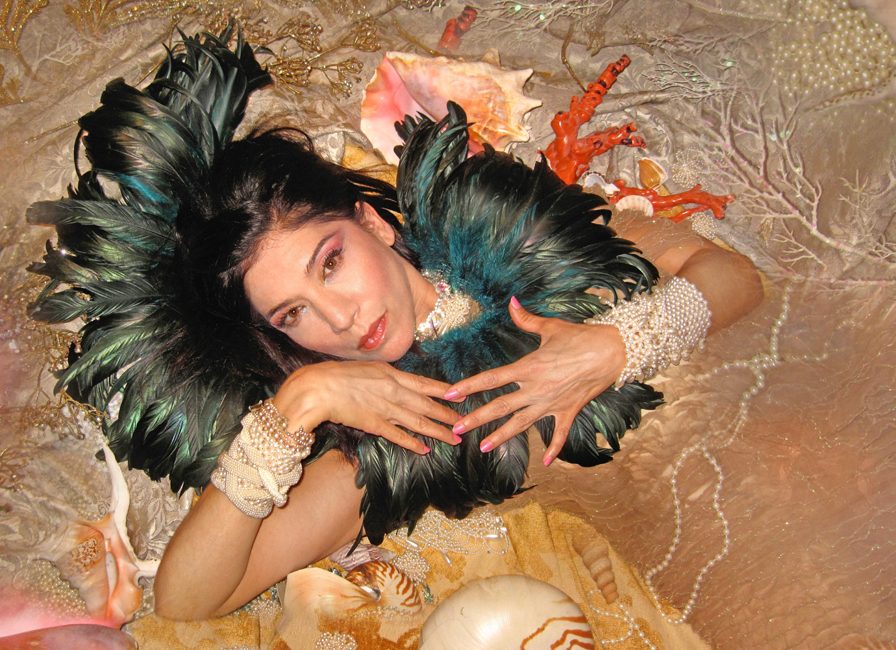
Sussan Deyhim is both a purveyor and seeker of transcendent cultural experiences. Equal parts composer, vocalist and performance artist, Deyhim’s restless creative spirit has informed projects of immense magnitude across a multitude of disciplines.
Her music explores the intersections between Middle Eastern classical and folk, Western vocal approaches, new music, and electronics. From structured songs to wordless incantations, Deyhim’s elastic musical approach knows no boundaries. She’s equally at home improvising complex, mercurial vocals against diverse global soundscapes as she is covering a Dylan song. Her goal is to blur the lines between genres, providing a window into her perspective that the world is a cultural continuum, not a series of segmented spaces.
Since relocating to New York City from Iran in 1980, Deyhim has remained a pillar of the city’s arts scene, engaging in expansive projects of her own, as well as collaborating with giants such as Ornette Coleman, Brian Eno, Bill Laswell, Peter Gabriel, Richard Horowitz, Joe Jackson, Shirin Neshat, and Hector Zazou—just to name a few.
Deyhim also runs her own label Venus Rising, which has released six albums and EPs to date, including the acclaimed City of Leaves, as well as soundtracks for her multimedia works with filmmaker Shirin Neshat. She just put out a new single titled “Marabeboos” through the label, featuring unique covers of an iconic Iranian 1950s pop song.
Deyhim is currently immersed in her most ambitious work to date, The House Is Black, a project that explores the world of Forough Farrokhzad, the renowned Iranian poetess of the 1950s. Farrokhzad was an inspirational and incendiary presence during her lifetime, creating major ripples across the country’s art and sociopolitical realms that continue to this day.
All of Deyhim’s output has one key goal in mind—instigating change in her listeners. We began our conversation exploring that viewpoint.
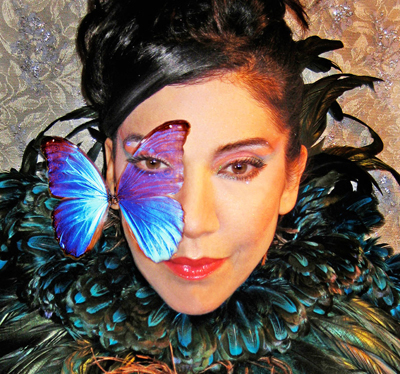
What types of change do you feel your music can initiate?
Sonically, I’ve been really into the shamanistic and trance aspects of music, especially as they relate to the human voice. The voice is a very unveiled instrument. It has different kinds of influences on the human psyche beyond a musical influence. It has many more layers of information. It’s a primordial instrument from the beginning of time. Before language existed, you had this thing called the voice and what it transmits is beyond beautiful singing or tonality. It’s connected to your breathing. Your breathing is connected to your chakras, which are connected to a much more sacred space within you. So, on that level, I’ve always believed in the ritualistic aspect of music, which is the most interesting part of it to me.
In the times we live in, with everything so packaged, it’s easy to feel like artists have to reduce musical energy into songs or referential sonic expression that people are familiar with. But artists have the possibility of taking listeners even deeper into a much more sophisticated version of the same zone. The influences going through my music are more on that level. They are deeply political without having anything to do with factual politics, because I think factual politics are really messing up the human psyche. And if you want to do something truly political, stay away from factual politics. Instead, create vibrations, sensuality and art forms that allow people to understand how they can transcend to spaces if they weren’t conditioned by sociopolitical issues—the things that condition everything around us, including our upbringing and the class system in which we live.
For me, the most important aspect of my music is when the material is so abstract but so emotional that it introduces a whole different pathway to a sonic experience—one that allows you to surrender being controlled by anything like politics or social brainwashing. That’s the deepest element of what I idealistically pursue as a composer.
Some people call what I do otherworldly. It’s because I’m not following a traditional path or being faithful to one tradition. My music embraces a lot of different traditions. Musical traditions have a lot to offer, but the problem is when someone gets locked in a tradition and hides behind it, without offering true and honest expression. It doesn’t matter how amazing a tradition is when it’s part of an appropriation that isn’t a true extension of your own life. If it isn’t that, then it’s like decorative art. You’re turning that tradition into a museum piece. Historical museum pieces are valuable, but they’re not an extension of our current reality or the way we want to change the world in the future, much less change your own reality.
What drove you to pursue The House Is Black project?
It’s about Forough Farrokhzad, a poet and filmmaker from 1950s Iran. She was one of the most influential modernists of the Iranian Farsi language. It’s a tradition that’s thousands of years old. It’s truly amazing, mystical work that we’re really proud of. At the age of 17, she just goes for it, deciding that the current use of language is not expressing the viewpoint of her generation. She started her first book of poetry at age 17. She had a couple of the incredible, erotic poems in the book published in the newspapers. People got really pissed off with the newspapers. They said it was the poetry of the prostitute. There was a major reaction. But she kept growing as an artist. Her poetry became more about language, more literary, more abstract, and reflecting a purity of ideas. Some have to do with humanity. Some have to do with the sociopolitical situation of the era. Some are literary experiments.
She fought with the traditionalists of her time. It opened up a lot of other possibilities for us. It’s easy to judge her work or my work as not being authentic to our culture. Of course, I’m fascinated by ritual and cultures, but it’s not just mine, but many others. She was the same way. Her work was not about mysticism and tantric reality. Rather, it was about carnal and existential reality. She pursued that because she had a God-given talent.
I view what I do in a similar way. Why do I sing this way? I don’t know. This voice was given to me. The best work I’ve done has been outside of my control. So it’s about the realm of mediumship. We just reach out and pray and hope something comes through us. It’s more wise to stay out of the way, not control it, and let interesting things happen through us.
Forough challenged many of the taboos of her time. She was also an astounding filmmaker. She died at the age of 32 and left so much work behind. I feel she is a true heroine of contemporary Iranian arts and hasn’t really been recognized. I created The House Is Black because there are things we share in common. I’m not an artist that’s known in mainstream Iranian culture. My work is about introducing ideas that are more future-leaning than about the past, though it embraces the past and present. Though there is a 30-year gap between us, her sensibilities and journeys speak to me.
Like her, I feel incapable of trying to rationalize what I do. I feel if you come and listen to my music, you will get into it. And if you don’t get into it, your children might meet my work 50 years after I die and realize that there was a serious dedication to certain sonic sensibilities that weren’t part of a tradition.
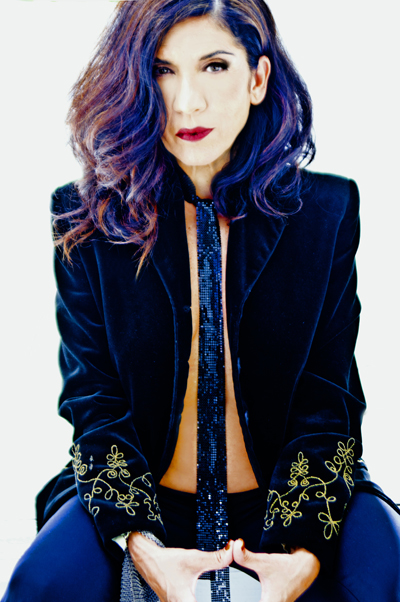
You’ve said this is the most ambitious undertaking of your life. Tell me about the complexities of creating it.
It really is, because I’m dealing with a poetess from Iran who I share a lot of understanding with. I don’t really work with Iranian subjects, but I feel she should be at least as known as Frida Kahlo, Maya Deren, Simone de Beauvoir, or Patti Smith. This is a very serious project. I live in Los Angeles, which has the biggest community of Iranians living in exile. There are 800,000 in Los Angeles and 1.5 million in California.
It’s not the scene I really work in, but I’ve come across a lot of older people involved in cultural foundations who took an interest. However, this isn’t only a piece designed to introduce Forough to the world. It’s a cultural project that has to do with female progressive artists, which represents a double-whammy as far as being misunderstood goes.
Iranian society has certain kinds of cultural lethargy. I don’t want to generalize about everyone, because we have a lot of amazing people who have achieved enormous success in places like Silicon Valley, but culturally, there is an attitude that encourages Iranian culture, except film and visual arts, to stay very traditional. Classical and traditional Iranian concerts are always sold out, with 5,000 people attending. The trashy Iranian pop music of the ‘70s still sells out the Dolby Theatre in Los Angeles, but intellectual, sophisticated, experimental music is too out there for the majority of the Iranian audience. There’s typically no way of meeting or translating one into the other.
One thing that’s interesting with Iranian visual art is that it’s considered an investment. So, a lot of wealthy people are interested in that. Instead of buying diamonds, they buy art. That has brought legitimacy to contemporary, conceptual Iranian art. But music remains problematic.
I feel The House Is Black has the best of intentions, and Forough’s poetry is the language of the project—the libretto. Her voice is different from mine. It’s a poetic voice. I’m not a writer. I’m a musician. Her way with language reflects what I like to express nowadays as well. They’re an extension of my own perspectives. It’s a very provocative and progressive piece and is just the way it needs to be.
Describe the elements you explore within The House Is Black.
There are two distinct projects involved. Once is a performative art installation at Shulamit Gallery in Los Angeles, which opens November 15. The installation's prints were produced through a residency fellowship at the Robert Rauschenberg Estate and Foundation. The second is the full-on media and stage production, which has its world premiere on January 23rd, 2015 at the Center for the Art of Performance at UCLA's Royce Hall. That event is also being made possible with the substantial support of Farhang Foundation, which is dedicated to celebrating and promoting the study and research of Iranian art and culture. Of course, both projects share some elements and themes, but the art project explores the visual elements that I have developed over a three-year period. The media and stage production has a monumental musical score that's probably among the most substantial compositions and vocal works of mine in collaboration with my longtime partner, composer Richard Horowitz. There's also a more lush dramatic aspect to the stage production that an installation could not include. It's all about linguistics and codes of communications in these mediums.
The whole point of this project for someone like me who's lived, loved and learned from so many mediums is to keep things at the threshold of this very challenge and determine how much dramatic content is universal and how much intellectual and conceptual sophistication a poetic or philosophical art form could communicate.
The projects are based on the polyphony of Forough’s imagination. She had a lot of unique ideas, so these pieces have many textures and layers. In the media and stage piece, each scene is expressing a different idea, all of which is relevant to both Iran and the world. It’s all presented in a very conceptual way. The compositions are very contemporary classical, with a lot of different musical influences. Along with Richard, I worked with other collaborators, including John Beasley and Mitch Foreman. Each scene takes you through the visual atmosphere of a poem, with a different personality and composition. One piece I like a lot is called “Gift,” which is poem of Forough’s which features 40 voices mixed in surround sound. People have said it’s very Gil Evans as far as its harmonic sensibility goes. There are a lot of varying nuances that relate to the content of the poetry.
It has taken a long time to do this. It was very challenging to determine if this should be a biographical piece or about the poems. I became infatuated with an abstract sensibility and decided it should be based on interpretations of her poetry. If you didn’t know her before, by the end of the stage piece, having traveled in her polyphony, you will know who this woman was. It’s done without dealing with a linear storytelling narrative. It doesn’t start out with who her father was. It’s about the elements of the poetry. In the beginning, she had poems that rhymed and stayed in the traditional classical love poem format. Gradually, her work got more deconstructed and became darker and more existentialist. The last book she wrote, which was published after she died, was her most interesting one. The ideas are very profound and the language is very free. It’s about itself. It’s not about trying to address any sensibility. The music deals with this in the same way.
There is one poem that is very erotic called “My Lover” in which she describes her object of desire as a man, which is very provocative considering what we know of Iran. But the way we depict it in the piece is very spiritual. In its time, the poem was taken very carnally. But when someone like that is captivated by her lover, it’s not a carnal experience. So, I juxtaposed it with a really dynamic piece written for string quartet with a vocal leaning, and a little bit of jazz and contemporary classical influence.
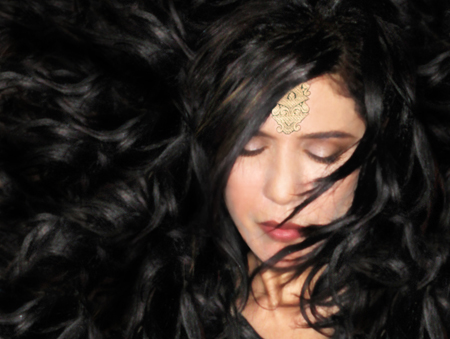
Elaborate on the creative process behind the staged project.
The process is I read the poem, saw the nuances of the poem, and then decided what it needed. I’d come up with vocal melodies first and then determine what kind of rhythms and melodies could be based on the poem. I’d ask “Is it a lyrical thing? Is it an aggressive thing?” Next, I’d gradually weave in the textures and come up with grooves to create the juxtaposition of ideas her poem represents. The ideas keep growing and the work keeps changing. I’d then do sessions with the musicians and I might say something like “This is too literal” or “The percussion sounds too much like a jam session.” I might make things a little more abstract after that, or a little more electronic. Because I don’t work in any one tradition, the landscape is totally open.
I’m working in Logic. Richard Horowitz has a library of 200,000 sounds. We exchange sounds and groupings. So, we use that library as well as getting people to come in and play some of the parts. The final outcome is a good balance between elements, including the electronic and abstract. As I’ve said, I don’t like referential music. I want it to be a personal vision, rather than have one thing be a jazz piece and the other a Persian classical piece. I also have an infatuation with silence and the atmospheric elements of things. The problem with referential music is you’re always trying to see how good what you do is within the genre of music it exists within. You don’t necessarily listen to it as a journey or experiment.
Provide some insight into Richard Horowitz’s influence on the musical element of The House Is Black and how your collaborative relationship works.
Richard is a wonderful composer who writes music that is so deep, sensual and interesting. Today, you hear his musical approach in a more widespread way, but when he started with Jon Hassell, his was very unusual criteria. It was composition using electronic music before electronic music became big. Richard lived in Morocco, studied Arabic music, and had Middle Eastern and Southeast Asian influences ingrained in his music. But he didn’t do it with appropriation. It came from a philosophical fascination with the traditions. You could see and hear that it is a holistic interest, not just the taking of the notes. That approach has remained until this day. Richard’s music is quite mesmerizing, because when he works with Moroccan and Indian musicians, he leaves space and respects their timing and musical sensibilities. He clearly is someone who has lived these cultures on a more profound level.
When we worked together on The House Is Black, we communicated on so many levels. When I told him “I’m doing this piece and it’s based on a medieval thing,” I don’t have to go further and say that it’s for film or opera, or that it needs to serve the dramatic, theatric and literary aspects. It’s all said and done without that. We can develop great things together. We don’t really work together very often anymore, but this project is a great one. His music is really appropriate. The space in his music enables other things to happen, whether it’s creating mental space to float or fly, or for a visual element to exist. It all comes very naturally to him.
Why don’t you and Horowitz work together very often anymore?
Times have changed and we can’t release albums constantly or finance them the way we would like to it. We know so many really amazing musicians. It’s a real musical family and a blessing to connect with them in some way. But there is still money involved when you get them to participate. We can’t keep funding our own projects completely. Richard and I are a couple, so we must think in pragmatic ways. We have to do some projects that pay for our lives. It’s not just idealistic stuff anymore. We’ve also done so much together and as a couple. We need breathing space. So, it’s great that we do have different kinds of projects and travel to different places apart. Then we bring it all back home and collaborate within our common interests.
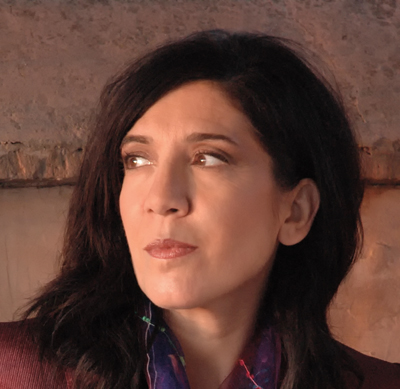
Have you done any really commercial work most people are unaware of?
The most commercial thing we did was co-write a Deepak Chopra album called A Gift of Love, which was a new age thing. We were the two co-composers. That album sold close to a million copies. Madonna and Goldie Hawn appear on it. Richard also did some big films, including Sheltering Sky which he got a Golden Globe for. I’ve worked on some major movies too, including The Kite Runner, Argo, and The Last Temptation of Christ. We both got involved in film because we’re interested in the synergy of mediums. Our music is very evocative and naturally marries with other elements.
The Last Temptation of Christ was a Peter Gabriel project. Did you interact with him directly on it?
I worked with Peter and Martin Scorsese on that project during one day in the studio. I did a lot of vocal improvisations on a scene in which they raised Lazarus from the dead. I got a phone call one day from Bob George of the Archive of Contemporary Music. He said “Peter is here and he’s looking for something that’s traditional, but is not really traditional. Can you meet with them?” So, I did and I improvised that part. They said “That’s exactly it.” So, I raised Lazarus from the dead. Since then, Peter and I have been in touch.
How do you look back at Majoun, your 1996 duo album with Horowitz?
It was the first album Sony Classical put out that had Eastern influences. Everyone was very proud of it. It was before Yo-Yo Ma’s Silk Road had emerged. Some of the tracks on the album are masterly. “Whorl on The Mount of Moon” is an amazing piece. It was mostly Richard’s album on which I sang. Not many people understood the album when it came out. Some completely missed the point. It’s a very composition-based album and a very personal one. It’s not trying to belong to something. It’s two musicians coming up with ideas and determining how they should work together. It was a real journey to create. I think the album will last awhile and people will realize its importance. Our first album, Desert Equations, also introduced many new ideas and went on to be highly influential. Majoun will experience the same thing. It’s a musically dense, very romantic album. It’s musical and lyrical. It’s an album that’s in love with music. It’s currently out of print, which is really a drag. We should get the rights back and rerelease it on my own label.
Turbulent, your multimedia collaboration with Shirin Neshat, is considered a major global artistic milestone. Reflect on how it came together.
I had known Shirin for awhile. I met her in San Francisco in 1983. She was at UC Berkeley at that time. I had a dance company in San Francisco with two other friends then. We were doing very conceptual dance pieces. I didn’t know any Iranians there, so it was nice to meet someone who shared common ground. We both knew we couldn’t go back home. We became good friends. Fifteen years later, Shirin was getting a lot of attention for her work. One day, she called me and said “Sussan, I have an idea for a piece I want to share with you. I’d like you to compose the music and create a persona for it.” I agreed and went home and came up with ideas for the piece. I said “I think the woman should be more Renaissance and less Islamic, because it’s more universal.” She said that sounded great and loved the music. Then she asked me if I could perform the music live. I said “It’s really abstract. I can memorize it and lip sync it for the film.” And that’s what we did. We shot the film twice with Ghasem Ebrahimian, an amazing director of photography and artist, as well as filmmaker Shoja Azari as the lead male performer. That’s all we literally had the budget for. Turbulent earned the very important Golden Lion prize for Shirin. She was already doing well as a visual artist, but it suddenly launched her as a really big, international name. The piece is something to be proud of. It was a very interesting idea and touched people in a very primordial way. It transcended the situation from Iran into being a mythological situation that a lot of different kinds of people could relate to.
Shirin and I did another seven or eight projects in which I did the music for her installations, all of which are sitting in amazing institutions and permanent collections of major museums. The music was a very important, integrated part of the installations. The problem with this is that you can’t buy the music. You can only buy the art. We had an amazing time together. It was very special and great for my name to be out there. The kinds of musical experimentation I engaged in can no longer be released on labels anymore. The ‘70s are over. So projects like these became a venue for experimentation with abstract textures and many different influences. It’s very difficult to put out music like that into the world these days. The truth is, the collaborations weren’t as beneficial for me from a financial standpoint, but it was a beautiful collaboration. I’m really happy it’s worked out for her and the stuff is available across the world. Some of the installations are historical pieces that will remain a part of the history of art, which is a cool thing.
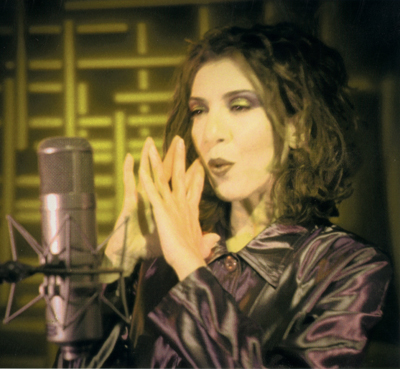
You’ve done a lot of work with Bill Laswell. Describe your working relationship.
I first worked with Bill on the Hashisheen: The End of Law album from 1999 in which he wanted me to recite a Rumi poem. I went to the studio very aware of Bill’s work. I was very excited to meet him. He wanted me to recite the poetry, not sing, which was unique. Bill was so soft spoken and not what I was expecting. He had this expansive sound, yet he’s a really tender personality. I did the project and he was impressed with my contribution. We immediately became friends. We’d hang out a lot in New York. We’ve had amazing conversations. He’s so cultured and well read. He loves esoteric information, as do I. Then he met Richard Horowitz and they did the beautiful Gnawa Music of Marrakesh record together. Bill and I have continued collaborating on different projects since. When my album Madman of God came out, I was supposed to do a remix. I told Crammed Records that I wanted to work with Bill and they got really excited. Bill agreed, but really liked the album and felt it didn’t need remixing. But he got together with Karsh Kale and came up with some great ideas. The remix album was considered blasphemous by some people, because to them, Madman of God was a genuine experiment. However, the remix introduced the album to many younger people that were into the drum and bass, dub, and funk scenes. It opened the door to other colors and nuances.
We’ve kept in each other’s periphery ever since. He’s super-open-minded, always interesting, helpful, compassionate, and kind—all the wonderful things you want from a friend. He’d always offer his studio to me at night. He’s a darling. People have this idea of Bill as very dark, but he’s a beautiful human being and an amazing creative entity responsible for a great deal of sonic sophistication.
Tell me how you came to sing “Caravan” in Farsi on Joe Jackson’s The Duke album.
Joe and I were on Sony Classical at the same time. Ten years ago, he asked me to collaborate with him on Night and Day II. I sang on “Why” for that album, which was very, very high-pitched. As with Bill Laswell, Joe and I started hanging out and loved spending time together. We had a little spot in New York we’d hang out in—a library in which we could smoke and drink. [laughs] One day, Joe called me and said I’m doing The Duke and I think you should sing ‘Caravan.’” Joe also used a lot of different musicians and vocalists for the album and wanted me in the mix. I told him I love that song and agreed. He said “But you have to translate it into Farsi.” Duke Ellington traveled a lot to the Middle East. It was very easy to translate because it’s actually a very silly song. I sent it to him and he said “This is working. Can we change a couple of words?” I performed it with him in the studio in Los Angeles. I love collaborating with him. He’s very open. He’s a Julliard graduate, but he’s also a punk. He’s also a great songwriter with a great, dry sense of humor. I find it great to talk to him because of his many layers.
You recorded a very unique take of Bob Dylan’s “All I Really Want to Do” for the Amnesty International Chimes of Freedom release. Discuss how you arrived at that particular arrangement.
I’ve been really involved with human rights organizations for the last 15 years. Amnesty International called me and said they had an idea to get dozens of artists to cover songs by Dylan. It was his 70th birthday, so it was also celebrating that. I said I’d do it and it was quite a challenge to choose something that hadn’t been taken by the more well-known artists. Then I ran into “All I Really Want to Do” which had a lot of potential. Dylan sings it with passion, but there’s also an element of anger at the same time. I chose to do it in a very feminine way. I was very self-conscious about it, initially, but my collaborators convinced me it was a really good idea. I also thought about doing it in a very punk way, which would have been interesting too. But my friends said let’s do it the other way. I like how it came out, but I wish we had mixed the guitars a little louder and made it more of a literal pop song. But when you’re doing projects like this, you don’t have the luxury of time. You have to deliver quickly and there’s never a budget. It’s a labor of love and your choices are influenced by that.
You just released a new single titled “Marabeboos.” Describe what made you want to explore it in two distinctly different ways.
“Marabeboos” is one of the most well-known Iranian popular songs of the 1950s. It was written a few days after the CIA coup d’état. It's the most beautiful and timeless farewell song ever. The Tango feel it has was a great idea from my friend Arshid Azarine. It immediately made sense when he played that vibe. When I was in Los Angeles, I included it in a concert, with musicians such as the amazing John Beasley, Richard Horowitz, Herman Mathews, Greg Ellis, Ken Rosser, Jon Ossman, and Mehdi Bagheri. I decided to let it all breathe and have John take some gorgeous solos. I chose to release both versions to showcase the different takes I explored with the song.
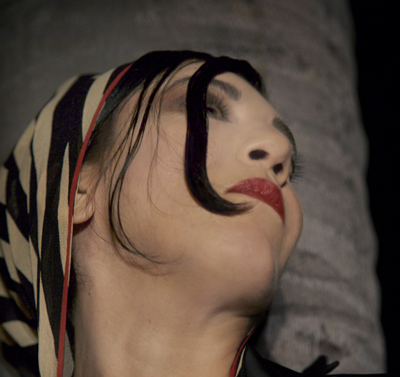
You said one of the things you bonded with Shirin Neshat on was the fact that neither of you could ever go home again. What does that reality mean for you?
Right now, it means luxury. I don’t like being identified as being from a place, culture, idea, or reality. For me, the separation from Iran and the death of the music industry are karmic because in a way, they made me start anew. On the pragmatic, existential side, I grew up in Iran in a very fertile environment. There was nothing not to be proud of then. We were attached to very wonderful things. When I got to New York City and realized I couldn’t go back home and was essentially a refugee at age 20, it’s something I couldn’t emotionally fathom. So, I replaced it with distractions and art I was involved with. I was going through absolute withdrawal from my situation, but I didn’t want to get too dramatic because at that time, it was too heavy an idea to not go home. Both Shirin and I tried to compensate for that lack of access to Iran where our great friends and family were with our creative activities. We just delved into them and it made New York easier. In New York, right from the beginning, my work and singing were embraced. I quickly became a part of the downtown New York community. Gradually, we both got too distracted to be nostalgic. Yes, it was a catastrophe to not go back home, but I thought “I’ve got to snap out of this. I’m here now. I have to go forward.” We both shared that and saw it in each other.
When we saw each other and worked together, there was this incredible ability to share slang, humor, references, and ideas. However, Shirin and I also had clear differences in our metaphors. She stayed within the contemporary reality of Islam’s influence on Iran and I never got into that. The world really responded to that and she had no reason not to pursue it—not that it wasn’t a good idea or that she had to do something else. So, she stayed within that framework and her work became more about women’s rights and the suppression of those rights, as well as gender issues. As for me, I realized the reality of being an Iranian female intellectual in New York City. My perspective was that I could never become the projection of other people’s idiocy onto me, because then you’re actually supporting the idea that those ideas are relevant.
It goes without saying that Iran as a country and culture has a heavy stigma for many in the West. How do you deal with that?
I don’t deal with it as a stigma. When people approach me, they immediately know they need to cut that shit out. I also understand that once that prejudice is there, there’s a blindness at work. The same person will likely be prejudiced about African-Americans and others, too. My getting uptight is not going to help anyone get rid of that. But most importantly, when the flexibility is there, they realize that I’m interactive, sensual and humorous, and not the daughter of a mullah. [laughs] It becomes immediately evident that I’m not promoting Islam or racism, or prioritizing any religion over any other. There’s no question that there’s a very significant prejudice against Iranians. There’s also no question that it has, to a certain extent, influenced my career in the USA. I also don’t think I would have developed the kind of work I have if I hadn’t lived in New York where that flexibility is there. The city said “The sky’s the limit.” New York made it possible for me to do something different.
A major, underground Iranian music scene is flourishing, with many women making music and posting it on the Web under assumed names. What are your thoughts about this form of rebellion that’s occurring?
In the world of visual arts, film, theater, and literature, unbelievable things have come out of Iran. Music is trickier, particularly because women were not allowed to sing for a good 25 years. And only recently the government said women could only sing for other women, and not in public. It also has to be two voices and harmonic. It can’t be a single voice because they consider it too erotic. So, it has been very challenging.
During the Green Movement and beyond, we’ve seen many women coming forward so courageously and getting really beaten up for what they’ve done. I’m just in awe and humbled by everything coming out the way it is from Iran. Whatever they’re doing in the underground Iranian scene needs to be embraced with open arms, because it’s really dangerous for the women to do what they’re doing.
Quite a few of the artists have reached out to me. I’ve also invited them to my shows as my guest when they come over here to the States. I feel quite maternal. What they’ve gone through is quite astounding. They’re very well read, because there aren’t as many distractions in Iran. People are actually very well educated. But they’re also abused by the government. There are a lot of drugs numbing the youth. The availability of drugs is widespread. Kids can get into opium and become addicted quickly. Whenever a drug becomes really expensive, another cheaper one comes out. For instance, crystal meth is a really bad scene there.
So, there are two things going on. There’s the constructive and creative element that pulls the youth into doing something valuable with their anger, with their revolt turning into a creative thing. There’s also the self-abuse and self-destruction side, which is the only way some people can handle the way things are. They’re often poor, young and have to survive. Some of them are runaways. So, I’m nothing but supportive of what they’re trying to accomplish.
However, I also need to stay critical of the kinds of music that are coming from Iran, especially when they say they’re doing jazz, blues or hip-hop. It’s important that we don’t mix up that critical perspective with the sense of openness they’re pursuing, given that they’re under so much pressure. However, the education must go on. Just because there is a political context within which these people exist doesn’t mean we shouldn’t advocate for more musical education and listening to take place. The underground Iranian music market is as advanced as it is here. People have access to a lot. They’re able to do research. It’s very sophisticated. They’re more ahead of the game because of the Internet and their ability to access YouTube.
When people come to the U.S. and start having a life here and establish themselves in this society, I want them to be eloquent in terms of their international sensibilities. They often need to broaden their references. If they say they’re doing jazz but don’t know Miles, or if they say they’re doing funk and don’t know George Clinton, then they have some listening to do. Some have never heard African musicians, because Iran is a deep musical culture surrounded by the influences of Turkey, Afghanistan, Pakistan and India. Western classical, African, and South American music isn’t as listened to. Sometimes when I collaborate with Iranian musicians, they’re amazing in their own tradition, but when I want to go into a different time signature, they sometimes get very nervous. It’s simply because they haven’t been listening. They otherwise have the chops.
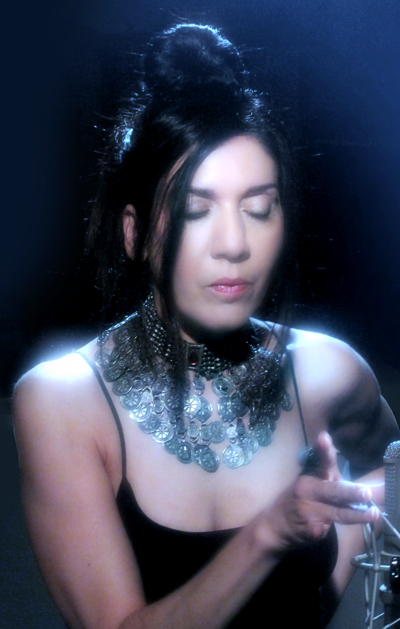
A lot of people ascribe a spiritual presence in your music. What’s your perspective on your music’s relationship to the spirit?
My initiation into spiritual music involved connecting dance to music when I was 14 in Iran. I was a ballet dancer and my company was associated with Persian national television. They had a company at the Caspian Sea during the summer and I’d go there. They would bring musicians and dancers together from different regions of Iran and we would study the real folklore with older dancers and musicians. Some of the influences came from the Southeast part of Iran, which is very African. The music was called Shour, a trance dance ritual which most probably reached Iran from Africa.
That experience of connecting music with dance was my first initiation into another reality. It was so attractive to me and brought exultation, utter despair and sadness into one place for me. This always happens to me when I’m in touch with trance music, whether it’s from Gnawa or Sub-Saharan Africa to Bahia. It’s about surrendering your being and passing through time and space without ego attachment. It’s about being part of the vibration. That experience has never left me or my music.
I think once people see and hear that in you, they realize they can also let go of attachments by also being part of that space. I don’t know what that space is, however. I don’t promote spirituality. I’m not a guru or shaman, even though some people see those in me. I create music because of the experience of immersing myself in a very special place of surrender. The main point with my music is sonic beautification. I really believe in that idea, especially through the female voice. Women can express such an evocative range of emotions and ideas through music. There are different kinds of sonic sensuality and tonalities very specific to women.
The importance of tone and the messages it can convey are very important to me. I consider my voice a tonal instrument. The vocal work I produce is like prayer in that it doesn’t seek to control. Rather, it gives into itself to produce a sound that seduces, but not in an erotic way. It’s ritualistic and an offering that doesn’t exist without the listeners being there. It also doesn’t speak in a referential musical tradition, but takes you into a ritualistic state. The human voice has a very different influence on the human psyche than a saxophone. The voice is a primordial thing that you hear when you’re in your mother’s womb.
There’s also an element of vulnerability in my music. I never feel comfortable performing at concerts. I always think “Oh my God. Why am I here? Am I going to produce anything? Why are people here? Am I going to be able to sing this song?” That happens even after singing for many years. There’s something that’s very human about all of this and I think people understand that I’m reaching out to them.
Describe your viewpoint on the struggle artists are facing today as they try to monetize their output.
We’ve experienced the death of the traditional music industry. But even before it died, things were still challenging. There was some machinery that enabled artists to produce and put out music. Things still need to change further for the better. The musical landscape is so vast and we need to take measures to ensure it doesn’t get reduced into referential sonic culture. I’ve used Kickstarter and it’s great that your fans who want new projects from you can help subsidize them. That’s a positive thing. We need to find other ways to monetize projects going forward as well.
Promoters are also very disappointing because they don’t understand that labels no longer provide publicity support, unless you’re a big name. No-one is putting thousands of dollars into helping the promoters publicize shows. But their style and logic is like the old days. They say “So, you have a new album? Do you have a new label?” It’s absurd. Who’s on a label anymore? Not many people. It’s a strange, vicious circle. You have the old logic at odds with the new reality of the world.
We need to fight for the survival of creative music. I won’t stop fighting because musicians live in an alchemical reality that other people don’t live in. It’s a blessing, as well as a cross to bear. Being a creative soul on the planet and producing new work every day requires space and freedom. None of it starts or ends in your comfort or your suffering. You’re part of a much bigger landscape when you’ve decided to become a musician. For most of us, we can’t leave the fight. We have to stay in it, otherwise we’re betraying the art and our possibilities. What artists do is unique. No-one else has lived within the density of information and reality that each artist has, which enables them to create a specific piece of art and put it out in the world. We put out the art because we have to. It’s not an easy choice. I could do many other things that could be more comfortable, financially speaking.
Sometimes people don’t get the importance of art. They think artists are just eccentric and experimenting, when they could have been doing something concrete with their lives. What they need to realize is that artists sometimes pose questions that would never have been posed by others. Perhaps the artist doesn’t have the answer to the question, but someone else does 10 years after you started something. But it may have been the artist that instigated the answer. Often the artist isn’t understood and is betrayed in their time and misunderstood. Then, five, 10, 30, or 100 years later, people realize there was a genius at work. Bill Laswell is there. Ornette Coleman is there. Bobby McFerrin is there. Miles Davis was there. Jackson Pollock was there. Stravinsky was there. Artists bring something important to the world. The histories of art and science are intertwined. All the amazing things that were born of both were never done by people being in a comfort zone.
Photo Credits:
1-2 by Tino Rodriguez & Virgo Paraiso
3 by Robert Hayman
4 by Tino Rodriguez & Virgo Paraiso
5 by Vivian Gonzalez
6 by Victoria Faust
7 by Lee Jaffe
8 by Richard Horowitz